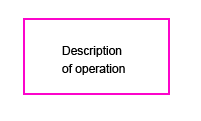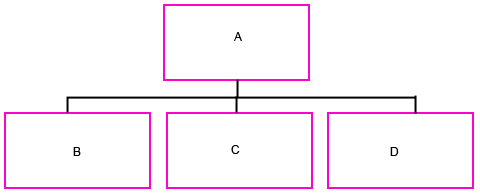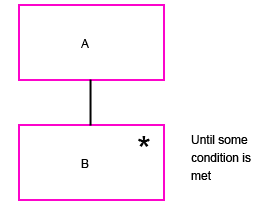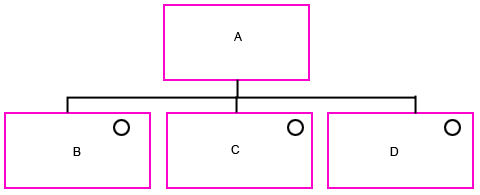 A LEVEL COMPUTING
A LEVEL COMPUTING Types of Language
Types of Language  Theory
Theory
25. Jackson Structured Programming (JSP) Diagrams
Earlier in this mini-website, in the procedural languages section, we mentioned 'Top-down' design and 'stepwise-refinement' as excellent approaches to design and code software applications.
Jackson Structured Programming is a way of carrying out a top-down design by means of a few simple but powerful diagrams, each type of diagram has a specific action to convey..
These diagrams are
1. Operation - a rectangle and a text description

This represents the software doing something specific, such as 'Calculate' or 'Initialise'.
2. Sequence - a set of rectangles joined by lines.

In a sequence, read the diagram first from the top, then from left to right. This diagram shows that operation A consists of a sequence of operations - B, C and D are called in that order.
3. Iteration - repeating something over and over again until a condition is met

Iteration is represented by a star symbol in the top right corner of the operation box, as shown in the 'B' box.
In this diagram, 'A' calls B to complete its task. B repeats its local operation until the condition defined by the text next to it is met.
4. Selection - a choice has to be made

Selection is represented as a circle in the top right corner of the box.
Operation 'A' will call only one of the selection boxes, depending on some selection criteria.
Summary
JSP diagrams are of four types: Operation, Sequence, Iteration and Selection. The next page will show how these diagrams are used together to describe a software application.
Challenge see if you can find out one extra fact on this topic that we haven't already told you
Click on this link: JSP Diagrams
Copyright © www.teach-ict.com

